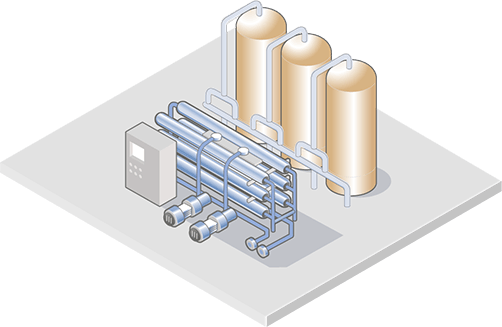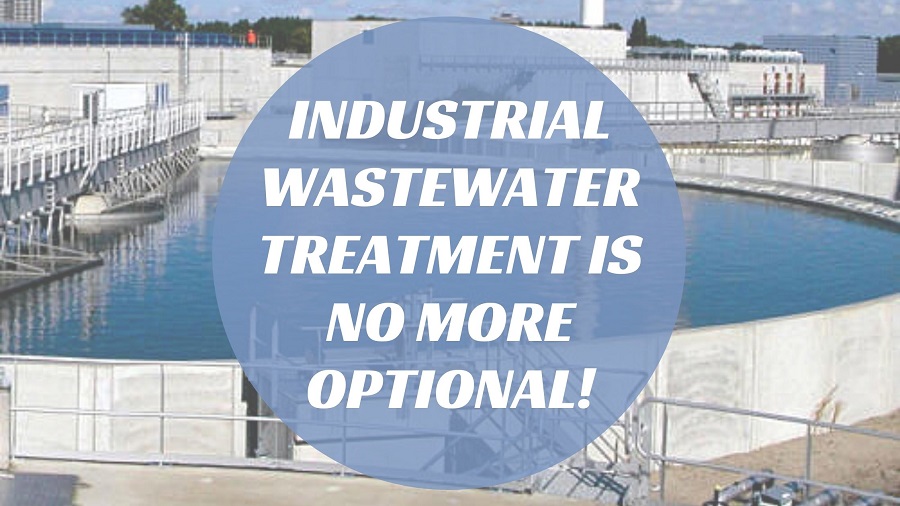Industrial Waste Water Treatment-- Eco-Friendly Solutions for Water Recycling
Wiki Article
Challenges and Solutions in Hazardous Waste Water Therapy
The therapy of commercial wastewater provides a diverse range of challenges, ranging from stringent governing conformity to the ins and outs of expense management and technological constraints. The irregularity in waste structure even more complicates the performance of standard treatment methods, often resulting in risen functional expenditures.Regulatory Conformity Difficulties
Exactly how can industrial facilities navigate the facility landscape of regulative conformity in wastewater treatment? The governing structure regulating wastewater monitoring is diverse, often differing by territory and type of market.To effectively handle these conformity difficulties, centers should carry out durable monitoring and reporting systems that make sure real-time information collection and analysis. Routine audits and threat assessments can determine possible conformity gaps, permitting aggressive adjustments in treatment procedures. Staff member training programs concentrating on regulatory understanding and ideal techniques are important to promote a society of conformity within the organization.
Furthermore, involving with regulative firms can supply valuable understandings and clarify uncertain regulations. Facilities may additionally take advantage of speaking with environmental specialists who focus on wastewater therapy compliance, making certain that they stay informed of evolving policies. By taking on these strategies, commercial centers can not only satisfy conformity requirements however additionally boost their operational effectiveness and ecological stewardship.
Cost and Economic Obstacles
Browsing regulatory compliance in wastewater therapy usually presents considerable economic obstacles for industrial facilities. The expenses related to implementing required treatment innovations, keeping conformity with stringent policies, and handling functional expenditures can be discouraging. Many organizations deal with high first resources expenditures for the building and construction or updating of wastewater therapy plants, which might stress budgets, especially for medium-sized and little business.Moreover, continuous functional expenses, including labor, maintenance, and chemical inputs, add to the economic worry. The changability of rising and fall power rates and the prospective requirement for extra investments to meet developing regulations exacerbate these financial stress. In lots of situations, the lack of financial incentives or assistance from federal government bodies makes it a lot more challenging for businesses to warrant financial investments in sophisticated treatment systems.
Additionally, the financial feasibility of wastewater treatment solutions is often examined, specifically for markets with tight earnings margins. Therefore, it is vital for industrial centers to check out affordable strategies, such as taking on ingenious funding choices, participating in collaborations, and leveraging emerging modern technologies that can assist reduce these financial barriers while ensuring conformity with environmental requirements.

Technological Limitations
Many technological constraints impede the efficiency of commercial wastewater therapy processes. One considerable challenge is the insufficiency of existing treatment modern technologies to attend to complex pollutants.Additionally, the scalability of therapy technologies presents a challenge. While some innovative methods, like membrane layer filtration or sophisticated oxidation, reveal pledge in regulated atmospheres, their execution on a larger range can be prohibitively costly and practically challenging. Upkeep and operational intricacies better complicate the fostering of these systems, specifically for smaller markets with minimal technical know-how.
The integration of real-time tracking modern technologies additionally remains inadequate in several treatment facilities. Without efficient tracking systems, drivers can not adequately analyze treatment effectiveness or find possible failings, resulting in inconsistent effluent high quality. Subsequently, resolving these technological limitations through research study and advancement, together with financial investment in cutting-edge remedies, is essential for enhancing the effectiveness of industrial wastewater treatment and guaranteeing regulative compliance. Industrial Waste Water Treatment.
Irregularity in Waste Structure
In the realm of industrial wastewater therapy, the irregularity in waste structure provides a formidable challenge. Industries create wastewater with varied attributes, influenced by factors such as manufacturing procedures, basic materials, and operational practices. This diversification complicates the treatment procedure, as traditional systems typically have a hard time to effectively resolve the wide variety of contaminants present.As an example, wastewater from food processing may contain high degrees of organic matter, while effluents from chemical manufacturing could include hefty steels and unsafe compounds. This variation demands adaptable therapy methods to guarantee conformity with ecological policies and secure public health. Additionally, changes in waste structure can happen over time, affected by adjustments in manufacturing timetables, maintenance activities, or the introduction of new products.

Cutting-edge Therapy Solutions
Innovative therapy options are necessary for dealing with the complexities of commercial wastewater management. Standard approaches typically fall brief in successfully getting rid of a large array of pollutants, particularly in facilities with varied effluent streams. Recent developments concentrate on incorporating advanced innovations to boost treatment efficiency and sustainability.One encouraging method is using sophisticated oxidation procedures (AOPs), which utilize effective oxidants to deteriorate natural toxins. AOPs, consisting of photocatalysis and ozonation, can dramatically lower hazardous materials and improve effluent top quality. Additionally, membrane bioreactor (MBR) innovation has gained traction, integrating organic treatment with membrane layer filtering, causing top quality effluent and decreased impact.
One more cutting-edge remedy is the implementation of resource healing systems. Techniques like anaerobic digestion not only deal with wastewater yet also generate biogas, which can be utilized as a renewable energy resource. Furthermore, the adoption of synthetic intelligence and artificial intelligence designs can optimize treatment procedures by forecasting variations in wastewater composition, consequently enhancing functional performance.
These ingenious services not just address governing conformity however additionally advertise environmental sustainability, leading the means for a more reliable and resilient industrial ecosystem.
Verdict
To conclude, resolving the challenges of commercial wastewater treatment needs a diverse technique that incorporates regulative compliance, price administration, and technical innovations. Innovative services, such as advanced oxidation procedures and membrane bioreactor modern technology, deal paths to enhance treatment performance. Real-time tracking systems and collaborative engagement with regulative agencies can advertise sustainable techniques while alleviating financial pressures. A dedication to continuous enhancement in therapy methods will eventually add to the effective management of industrial wastewater and environmental management.The treatment of industrial wastewater offers a diverse range of challenges, varying from rigorous governing compliance to the intricacies of expense administration and technical restrictions. Industrial Waste Water Treatment.Navigating regulatory compliance in wastewater treatment frequently presents considerable financial obstacles for industrial centers. Addressing these technological constraints via research and advancement, along with financial investment in ingenious remedies, is essential for boosting the efficacy of industrial wastewater therapy and guaranteeing regulative compliance
Wastewater treatment centers image source must invest in durable monitoring systems and adaptable therapy technologies qualified of fitting varying influent characteristics.In conclusion, addressing the obstacles of commercial wastewater treatment requires a multifaceted approach that incorporates governing compliance, cost management, and technical innovations.
Report this wiki page